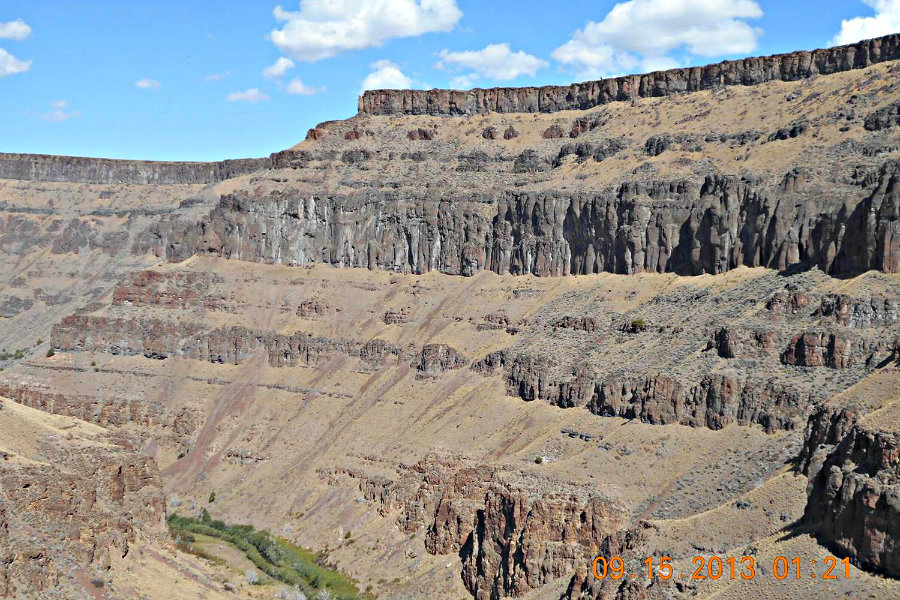Massive supervolcano eruptions once rocked Yellowstone
Loading...
A recent study published in the Geological Society of America Bulletin identifies an area of great volcanic activity along the Snake River Plain between Oregon and Yellowstone.
While scientists have long known that the supervolcano now under Yellowstone left a trail of mega-eruptions across the Pacific Northwest, an international research team has found evidence of only 12 distinct eruptions, contradicting earlier theories that the eruptions were more numerous and less extreme.
“The size and magnitude of this newly defined eruption is as large, if not larger, than better known eruptions at Yellowstone,” said the study’s lead author, Dr. Thomas Knott, in a University of Leicester press release, “and it is just the first in an emerging record of newly discovered super-eruptions during a period of intense magmatic activity between 8 and 12 million years ago.”
Scientists used paleomagnetic data, radioisotope dating, and rock and mineral chemistries to identify the size and location of these ancient eruptions.
One eruption, called the Castleford Crossing eruption, produced a volcanic sheet that covers approximately 14,000 square kilometers – an area the size of Connecticut – in southern Idaho.
Knott and his team identified 11 other super explosions that they say were likely similar in size to the well known, massive super explosions at Yellowstone.
“While it is well-known that Yellowstone has erupted catastrophically in recent times,” said Knott, “perhaps less widely appreciated is that these were just the latest in a protracted history of numerous catastrophic super-eruptions that have burned a track along the Snake River eastwards from Oregon to Yellowstone.”
Yellowstone certainly remains volcanically lively. In 2013, a study found that Yellowstone’s “supervolcano” was even larger than scientists had previously believed, with a magma chamber stretching 55 miles long, and 18 miles wide.
If the Yellowstone supervolcano explodes, says the 2013 study, the resulting eruption could be up to 2,000 times as violent as the Mt. St. Helens eruption several decades ago.
In the spring of 2015, scientists discovered an even deeper magma chamber.
The last Yellowstone eruption occurred 640,000 years ago – a blink of an eye in the geologic time scale, compared to the Snake River Plain explosions 8 to 12 million years ago – but some remain concerned that this destructive supervolcano is ripe for an eruption.
"Three super-eruptions at Yellowstone appear to have occurred on a 600,000-700,000 year cycle starting 2.1 million years ago," explains the BBC. "The most recent took place 640,000 years ago – suggesting Yellowstone is overdue for an eruption."
This new study, with evidence of 12 volcanoes in about 3 million years, suggests that the Yellowstone supervolcano can erupt catastrophically on a much shorter cycle of about every 250,000 years.








